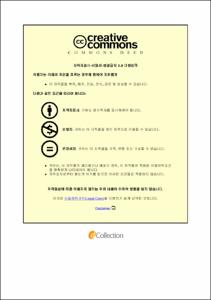미세먼지(particulate matter)에 의한 피부 노화와 색소침착에 미치는 홍삼 유래 천연성분의 역할
- Abstract
- Background and Objectives: Exposure to airborne particulate matter (PM) is an ever-increasing concern worldwide. Strategies to counter the detrimental effects such as induction of pigmentation and ROS-associated aging and inflammation of cutaneous exposure to PM are being investigated actively. Among various naturally derived products, Korean red ginseng extracts and individual ingredients have been well demonstrated for their role in suppression of ROS, inflammation, and resultant skin aging. In addition, some saponin ingredients were reported to affect skin melanogenesis. Recently, Rg3 and Rf saponins were revealed to work as anti-melanogenic agents. In order to find ideal modality for protecting human skin from airborne PM-induced oxidative damage and hypermelanosis, we hypothesized that Korean red ginseng extracts may protect or reverse the PM-induced detrimental effects. Our aim was to design in vitro and ex vivo experiments to demonstrate the skin protective effects of red ginseng extracts after cutaneous exposure of the skin to particulate matter.
Methods: The biological effects of four types of particulate matter (PM10) and Korean red ginseng extracts (saponin and non-saponin fractions) were evaluated both in vitro and ex vivo. Cell viability and intracellular reactive oxygen species (ROS) levels were determined in normal human epidermal melanocytes (NHMs), human epidermal keratinocytes (NHKs) and their cocultures using the DCF assay. Experiments with ex vivo skin explants also demonstrated the protective properties of saponins against the detrimental effects of exposure to particulate matter (PM). Melanin assay, quantitative real time PCR and western blotting were also performed to determine the effect on melanogenesis and the implicated molecular signaling pathways in in vitro and ex vivo experiments.
Results: Exposure to 100 μg/ml of PM resulted in decreased keratinocyte viability coupled with augmented oxidative stress indicated by DCF fluorescence. These observations were attenuated by treatment with saponins. Non-saponin fractions could decrease PM-induced oxidative stress, but could not improve keratinocyte viability. PM exposure also led to increased melanin production in a coculture model, which was mitigated by treatment with saponin fractions. Treatment with both saponin fractions and non-saponin fractions resulted in a decrease in matrix metalloproteinase (MMP) levels after exposure to PM.
Conclusion: Korean red ginseng extracts could protect the skin from the harmful effects of PM exposure by reducing ROS, keratinocytic cell death and dermal matrix deterioration. Moreover, saponins successfully reduced PM-induced melanin accumulation thus can be utilized as safe and effective anti-melanogenic agents in real world when melanogenic PM is prevalent.
Keywords: particulate matter, melanogenesis, skin aging, oxidative stress, Panax ginseng, saponins
- Issued Date
- 2020
- Awarded Date
- 2020-02
- Type
- Dissertation
- Alternative Author(s)
- Ik Jun Moon
- Affiliation
- 울산대학교
- Department
- 일반대학원 의학과
- Advisor
- 최지호
- Degree
- Doctor
- Publisher
- 울산대학교 일반대학원 의학과
- Language
- eng
- Rights
- 울산대학교 논문은 저작권에 의해 보호받습니다.
- Appears in Collections:
- Medicine > 2. Theses (Ph.D)
- 파일 목록
-
-
Download
 200000287919.pdf
기타 데이터 / 1.46 MB / Adobe PDF
200000287919.pdf
기타 데이터 / 1.46 MB / Adobe PDF
-
Items in Repository are protected by copyright, with all rights reserved, unless otherwise indicated.